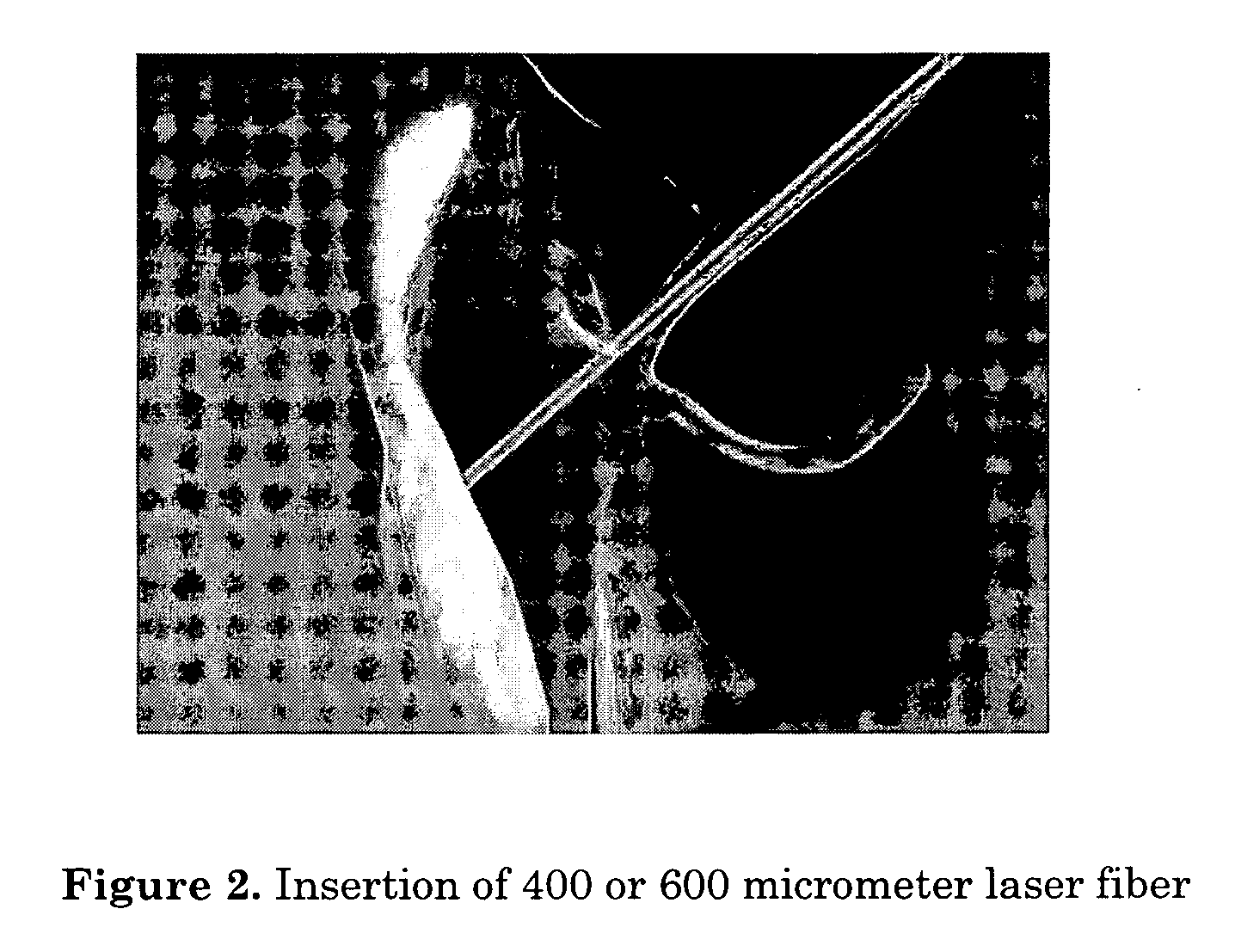Method of intracanalicular laser dacryocystorhinostomy
a laser and cannula technology, applied in the field of surgical techniques, can solve the problems of long surgical time, red and painful, and swollen lacrimal sac, and achieve the effect of reducing the time of surgery
- Summary
- Abstract
- Description
- Claims
- Application Information
AI Technical Summary
Benefits of technology
Problems solved by technology
Method used
Image
Examples
example 1
[0046] Summary: Forty-three transcanalicular DCR were performed using a 980 nm diode laser (Varius, Intermedic, Barcelona, Spain) and bicanalicular intubation with silicone tube and prolene filament, both PVP-covered (PVP Ritleng lacrimal intubation set, FCI, Issy-les-Moulineaux Cedex, France). The results were analysed using a prospective, interventional, non randomized and non comparative study. Local and topical anaesthesia were used in patients with a clinical history of epiphora or dacryocystitis for nasolacrimal obstruction. A diode laser was used to effect a vaporization of the lacrimal sac, osteotomy and vaporization with coagulation of nasal mucosa. The mean duration of surgery was 14 minutes (range 7 to 29 minutes). In all cases, and during a two-month period, bicanalicular intubation was carried out using a silicone tube and prolene filament. Follow-up was between 4 to 38 months. The degree of epiphora was evaluated using the Munk scale, and lacrimal permeability was eval...
PUM
 Login to View More
Login to View More Abstract
Description
Claims
Application Information
 Login to View More
Login to View More - R&D
- Intellectual Property
- Life Sciences
- Materials
- Tech Scout
- Unparalleled Data Quality
- Higher Quality Content
- 60% Fewer Hallucinations
Browse by: Latest US Patents, China's latest patents, Technical Efficacy Thesaurus, Application Domain, Technology Topic, Popular Technical Reports.
© 2025 PatSnap. All rights reserved.Legal|Privacy policy|Modern Slavery Act Transparency Statement|Sitemap|About US| Contact US: help@patsnap.com



